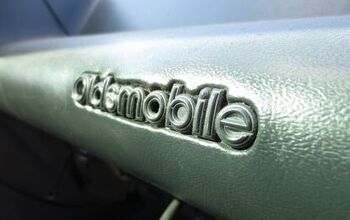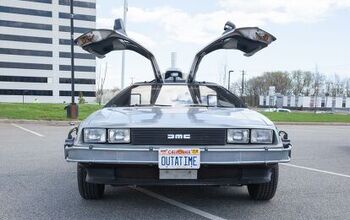QOTD: What Dead Model Would You Resurrect?

Despite the scores of new cars available to North American drivers, not every niche is filled. Entire segments of the new car market have all but been abandoned in the almighty search for profitability — or in the case of some OEMs, mere solvency.
Whither the personal luxury coupe? How about the almighty two-door, full size SUV? Buyers would certainly snap up tens of these every year.
I was inspired by an unfortunate recent passing of a great fellow Ohioan. John Glenn, Marine, astronaut, and senator, was a personal hero from my youth. I found myself thumbing through a collection of old magazines I’d acquired when I was a space-obsessed kid.
The July 28, 1969 Newsweek was notable for coverage of the Apollo Eleven moon landing, as well as three-page write-up of Senator Ted Kennedy’s long Oldsmobile drive off a short pier. Stuck in the middle of that Chappaquiddick nightmare was this full-page advert for one of the smallest mass-produced cars ever to oil American motorways – the MG Midget:
The ad copy acknowledges that the name doesn’t exactly evoke performance. Indeed, it would be a political correctness nightmare if the new Chinese caretakers of the MG octagon were to try and market a new Midget in the US. But that doesn’t mean we shouldn’t have a proper, diminutive sports car.
Yes, interweb clutch jockeys, I hear your “MIATA” screams. I have a Miata-shaped shelf of my own, keeping a broken Barbie Jeep and some golf clubs off the frigid concrete garage floor. But even the Miata is now a relatively comfortable, almost-luxurious car. I argue that a lighter-weight, agile, and most importantly CHEAP sports car is a crucial market segment.
Honda did it right with the Beat, and more recently the S660 — both kei-cars with low horsepower and a corresponding curb weight. Something fun to drive, yet cheap. I have to believe a basic sports car priced similarly to the cheapest cars on the market — Versa, Mirage, I’m looking at you — would be an attractive first car, or easy-to-insure occasional car for those of us stuck in family haulers most days.
MG hasn’t been particularly successful in the UK, where Chinese-manufactured cars are being assembled from knockdown kits in the historic Longbridge plant. Perhaps bringing back the historic Midget nameplate in a cheap roadster might spell success.
I’m sure there are others I’m neglecting. Do modern drivers need a Blazer, or a Granada, or even a GLC?
[Images: Oxyman/ Wikimedia Commons ( CC-BY-SA-3.0); Newsweek, July 28, 1969; Honda Motor Company]

Some enthusiasts say they were born with gasoline in their veins. Chris Tonn, on the other hand, had rust flakes in his eyes nearly since birth. Living in salty Ohio and being hopelessly addicted to vintage British and Japanese steel will do that to you. His work has appeared in eBay Motors, Hagerty, The Truth About Cars, Reader's Digest, AutoGuide, Family Handyman, and Jalopnik. He is a member of the Midwest Automotive Media Association, and he's currently looking for the safety glasses he just set down somewhere.
More by Chris Tonn
Latest Car Reviews
Read moreLatest Product Reviews
Read moreRecent Comments
- Jalop1991 the Honda eeny? WTF?Drugs are bad, mmmmkay?
- ToolGuy These would have sold better with a more prominent grille design.Source: BMW
- Cprescott Not legal. Executive branch cannot fund jack. This is Congressional authority.
- FreedMike I'm sure it's a nice enough car, but dear Lord, are these ugly, and it's a lot worse in light colors.
- Fred If the guy behind me had auto braking maybe he wouldn't have rear ended me and totaled my car. Even with insurance it would of saved me $10g and I'd still have my safe driving discount.




































Comments
Join the conversation
Porsche 911. Hasn't been one since at least 98. Or 89 to tell the truth.
Chrysler Imperial Southampton Coupe. 1957 year only.